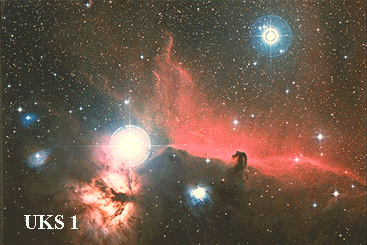Astronomy Picture of the Day
Discover the cosmos! Each day we feature a different image or photograph of our fascinating universe, along with a brief explanation written by a professional astronomer.
September 25, 1995

Orion's Horsehead Nebula
Credit:
Photograph made from plates taken with the
UK Schmidt Telescope.
Color photography by David Malin.
Copyright:
Anglo-Australian Telescope
Board

